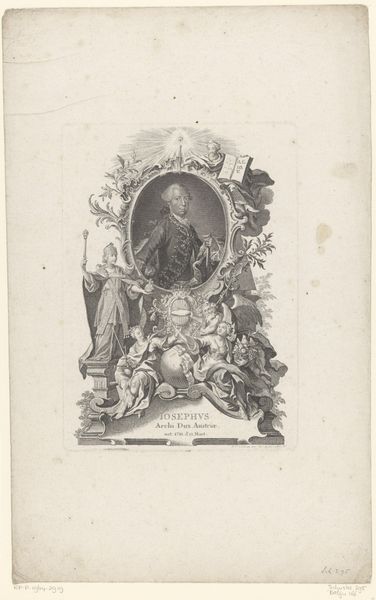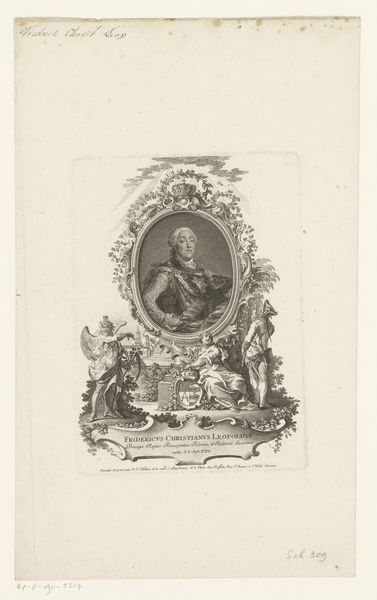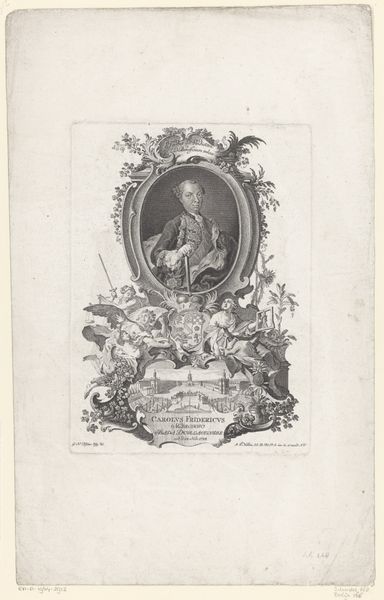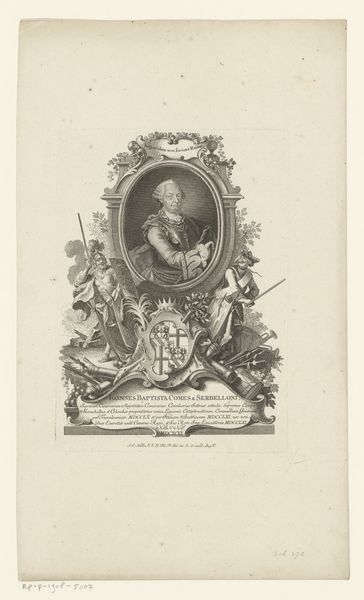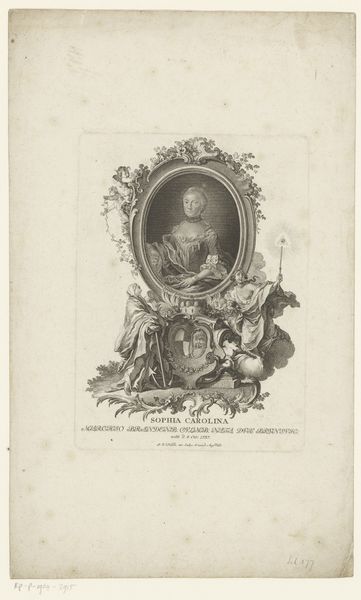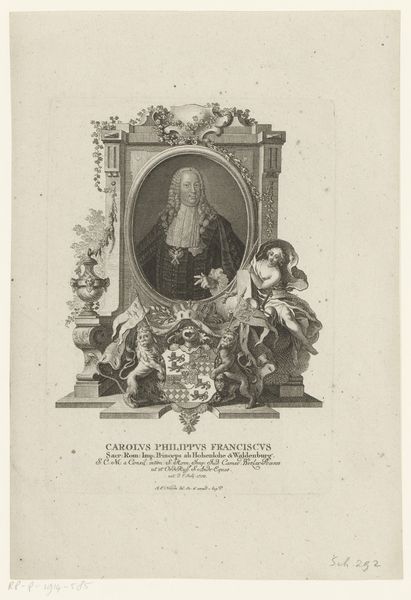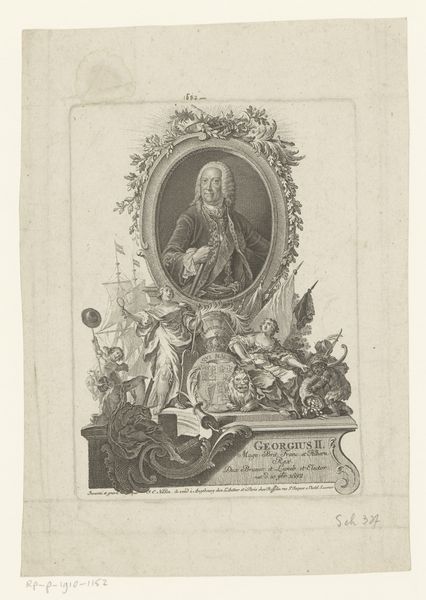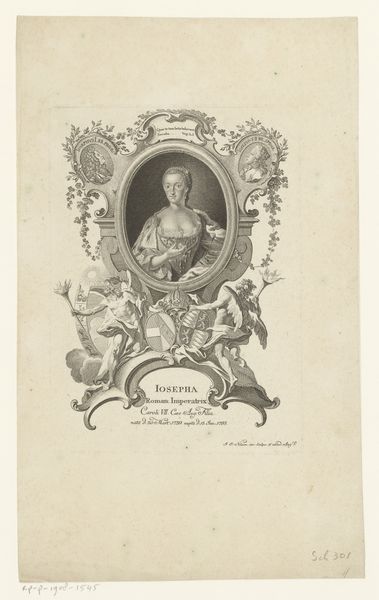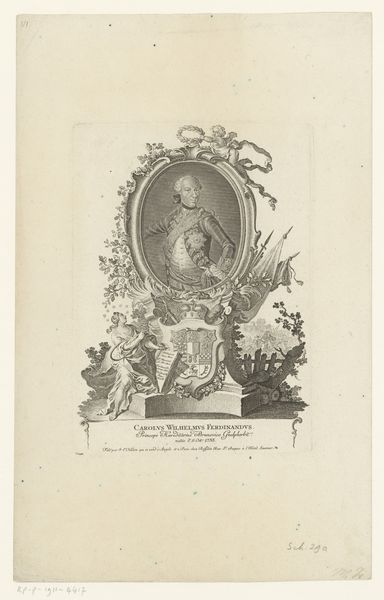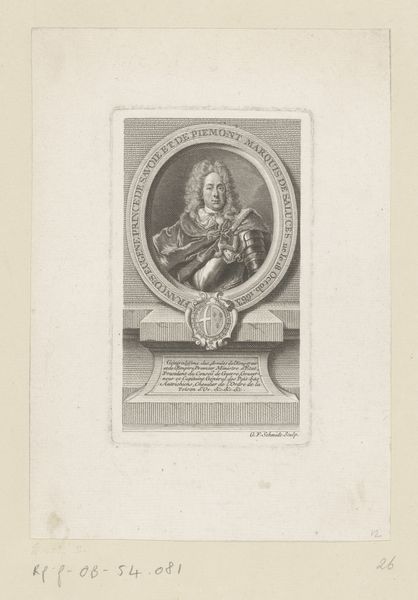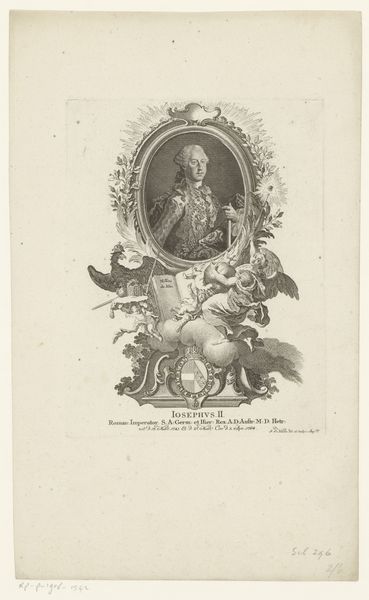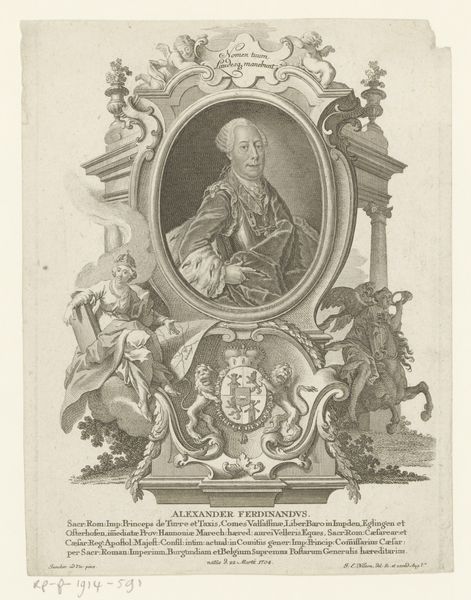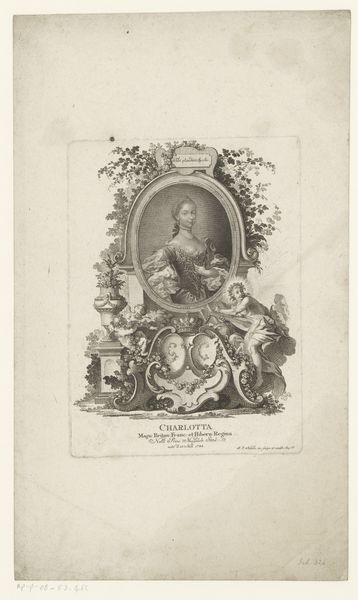
Portret van Johann Friedrich Carl von Ostein, keurvorst en aartsbisschop van Mainz 1731 - 1788
0:00
0:00
print, engraving
#
portrait
#
pencil drawn
#
light pencil work
#
baroque
# print
#
pencil sketch
#
old engraving style
#
pen-ink sketch
#
sketchbook drawing
#
pencil work
#
history-painting
#
engraving
Dimensions: height 220 mm, width 160 mm
Copyright: Rijks Museum: Open Domain
Curator: The Rijksmuseum is pleased to present this engraving, "Portret van Johann Friedrich Carl von Ostein, keurvorst en aartsbisschop van Mainz," created by Johann Esaias Nilson between 1731 and 1788. Editor: It has such a delicate touch; you can almost feel the weight of the paper and the precise hand that guided the engraving tool. The linear precision contrasts intriguingly with the opulent baroque framing. Curator: Indeed. The meticulous rendering speaks to the socio-political context of portraiture at the time, reflecting power, status, and the commissioning practices of the elite. The very act of producing this print— the engraver’s labor, the printing process— offers a lens onto the material conditions of artistic production. Editor: I am more struck by the masterful use of light and shadow to create volume. Note how Nilson achieves such texture and depth with a limited tonal range; observe how the face is rendered, full of grace and with delicate linework. It evokes an atmosphere of courtly grandeur while remaining quite intimate. Curator: However, the choice of printmaking as a medium makes it accessible to a broader audience, facilitating dissemination of this image beyond the elite circles the sitter inhabited. This reveals a complex tension between exclusivity and accessibility that is part of the culture of that period. The engraving, like the church itself, serves as a vehicle for distributing influence through material culture. Editor: Perhaps, but consider the iconographic framework. The intricate embellishments of the oval frame—the foliage and cherubic figure—these choices support the overall visual impact by creating a sense of importance and gravitas around the figure. The design isn’t merely functional. Curator: You are, of course, correct, but for me, seeing these elements calls attention to how this representation serves a specific purpose within broader societal dynamics: as the print enters circulation it engages directly within those markets and cultural dialogues. Editor: It is the skillful synthesis of lines, the arrangement of forms that captivates me, how Nilson captures more than a likeness. The piece expresses the prelate’s inner state. It offers insights into aesthetics—form, balance and structure. Curator: I appreciate seeing both the beauty in the craft of it, and the way the method connects with a specific societal function of influence and class. Editor: Agreed. This artwork merges beauty with history, and the man and the moment, into a cohesive visual.
Comments
No comments
Be the first to comment and join the conversation on the ultimate creative platform.
